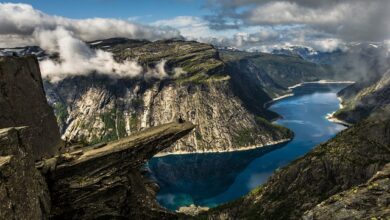The Future of Destination Guides: Trends to Watch

Destination guides have long been a staple for travelers seeking inspiration, planning itineraries, and navigating unfamiliar places. However, as technology evolves and consumer preferences shift, the way we create, consume, and interact with destination guides is undergoing a transformation. From AI-driven personalization to immersive experiences, the future of destination guides promises to be dynamic, interactive, and highly tailored to individual needs. In this article, we’ll explore the key trends shaping the next generation of travel guides.
1. Hyper-Personalization Through AI and Data Analytics
Why It Matters:
Modern travelers crave personalized recommendations that align with their unique preferences, budgets, and interests. AI and data analytics are making hyper-personalized destination guides a reality.
How It Works:
- Behavioral Insights: Platforms analyze past travel behavior, search history, and social media activity to suggest destinations and activities.
- Dynamic Content: Guides adapt in real-time based on user inputs, such as dietary restrictions, accessibility needs, or preferred travel styles (e.g., luxury vs. budget).
- Chatbots and Virtual Assistants: AI-powered tools answer questions, provide instant recommendations, and even book reservations.
Examples:
- Apps like Google Travel and Tripadvisor use machine learning to curate custom itineraries.
- Startups like Triplt leverage AI to create detailed, personalized trip plans.
Pro Tip:
Expect destination guides to become increasingly intuitive, offering suggestions before you even know what you’re looking for.
2. Immersive Experiences Through AR and VR
Why It Matters:
Augmented Reality (AR) and Virtual Reality (VR) are revolutionizing how travelers explore destinations, even before they arrive.
How It Works:
- Virtual Previews: VR allows users to “visit” landmarks, hotels, or restaurants virtually, helping them make informed decisions.
- On-Site Enhancements: AR apps overlay information about historical sites, hidden gems, or nearby attractions onto your smartphone camera view.
- Gamification: Interactive AR games can turn sightseeing into an engaging adventure, appealing to younger audiences.
Examples:
- The Louvre offers AR tours where visitors can interact with exhibits in new ways.
- Google Lens uses AR to translate signs or identify objects in foreign countries.
Pro Tip:
As AR glasses and wearable tech become mainstream, expect these immersive features to integrate seamlessly into everyday travel experiences.
3. Sustainability-Focused Guides
Why It Matters:
With growing awareness of environmental issues, travelers are prioritizing eco-friendly and sustainable tourism options. Destination guides are adapting to meet this demand.
How It Works:
- Eco-Certified Recommendations: Highlighting green hotels, carbon-neutral transportation, and ethical tour operators.
- Local Insights: Encouraging travelers to support local businesses, artisans, and communities.
- Low-Impact Activities: Suggesting hiking trails, wildlife sanctuaries, and cultural experiences over mass-tourism hotspots.
Examples:
- Lonely Planet’s “Sustainable Travel” series focuses on environmentally responsible destinations.
- Platforms like Green Pearls specialize in eco-luxury accommodations.
Pro Tip:
Look for guides that include tips for reducing your carbon footprint, such as packing light or choosing direct flights.
4. Real-Time Updates and Crowd-Sourced Information
Why It Matters:
Static destination guides are no longer sufficient in a fast-changing world. Real-time updates ensure travelers have access to the latest information.
How It Works:
- Crowd-Sourcing: Platforms like Yelp, TripAdvisor, and Reddit allow users to share real-time reviews, photos, and tips.
- Live Alerts: Notifications about weather changes, traffic disruptions, or unexpected closures help travelers adjust plans quickly.
- Social Media Integration: Instagram and TikTok serve as informal guides, showcasing trending spots and hidden gems.
Examples:
- Citymapper provides live transit updates and walking routes in urban areas.
- Waze combines GPS navigation with crowd-sourced traffic data.
Pro Tip:
Follow local influencers or hashtags related to your destination for insider insights and up-to-the-minute trends.
5. Voice-Activated and Hands-Free Guides
Why It Matters:
Voice assistants are becoming ubiquitous, and their integration into travel guides makes hands-free navigation easier than ever.
How It Works:
- Voice Commands: Ask Alexa, Siri, or Google Assistant for directions, restaurant recommendations, or historical facts.
- Audio Guides: Listen to professionally narrated tours while exploring museums, cities, or nature trails.
- Smart Devices: Wearables like smartwatches display concise travel info without needing a phone.
Examples:
- Detour offers location-based audio tours triggered by GPS coordinates.
- Amazon Alexa skills like “Travel Guide” provide destination-specific advice.
Pro Tip:
Download offline voice-guided maps for areas with limited connectivity.
6. Micro-Guides for Short Stays and Day Trips
Why It Matters:
As shorter trips and weekend getaways gain popularity, travelers need concise, focused guides rather than exhaustive manuals.
How It Works:
- Curated Lists: Highlight top attractions, must-try foods, and essential logistics for 24–48 hour stays.
- Thematic Guides: Focus on specific interests, such as food tours, art walks, or outdoor adventures.
- Compact Formats: Designed for quick consumption via apps, podcasts, or downloadable PDFs.
Examples:
- Atlas Obscura creates quirky micro-guides for offbeat experiences.
- Airbnb Online Experiences offers short virtual tours led by locals.
Pro Tip:
Use apps like Pocket or Instapaper to save bite-sized guides for easy reference on the go.
7. Multi-Sensory Storytelling
Why It Matters:
Engaging multiple senses enhances the storytelling aspect of destination guides, creating deeper emotional connections.
How It Works:
- Visual Storytelling: High-quality videos, 360-degree images, and drone footage showcase destinations vividly.
- Soundscapes: Audio clips capture ambient sounds, music, or local dialects to immerse users in the culture.
- Interactive Maps: Clickable icons reveal stories, photos, and videos tied to specific locations.
Examples:
- National Geographic’s digital guides combine stunning visuals with rich narratives.
- Soundtracking apps let you listen to playlists inspired by famous cities.
Pro Tip:
Seek out multimedia-rich guides that transport you emotionally, not just geographically.
8. Blockchain for Transparent Booking and Reviews
Why It Matters:
Blockchain technology ensures transparency and trust in travel bookings and reviews, addressing concerns about fake listings or biased ratings.
How It Works:
- Verified Reviews: Blockchain records authentic feedback from verified travelers.
- Smart Contracts: Automate payments and bookings, ensuring fairness for both parties.
- Decentralized Platforms: Eliminate intermediaries, allowing direct interactions between hosts and guests.
Examples:
- Winding Tree is a blockchain-based platform connecting travelers directly with service providers.
- Trippki rewards users with cryptocurrency for leaving honest reviews.
Pro Tip:
Look for blockchain-enabled platforms when booking accommodations or activities to avoid scams.
9. Niche and Community-Driven Guides
Why It Matters:
Generic guides often miss the nuances of niche interests. Community-driven content fills this gap by catering to specific demographics or hobbies.
How It Works:
- Specialized Content: Guides tailored to solo female travelers, LGBTQ+ communities, or adventure enthusiasts.
- Local Voices: Platforms amplify perspectives from residents, offering authentic insights.
- Collaborative Editing: Wikis and forums allow users to contribute updates and corrections.
Examples:
- SheMaps creates maps designed specifically for women travelers.
- Atlas Obscura highlights unusual and lesser-known destinations curated by its global community.
Pro Tip:
Join online travel groups or forums aligned with your interests to discover specialized guides.



